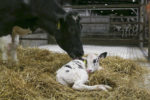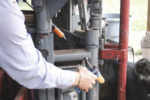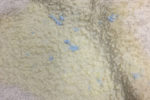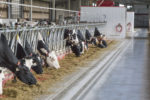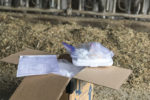Cow Health
While calves are born healthy, human management can greatly affect their health for better or worse. Creating SOPs that are readable, in the correct language and readily available is key to minimizing the number of errors that occur daily.
Read More
The role of phytochemicals during the transition period
How plants – more specifically phytochemicals – can help our heifers and cows conquer that daunting transition period and come out on top.
Read More
On-farm training to treat lame cows: Identifying lameness on the modern dairy farm
Paying close attention to cows’ behavioral patterns and keeping track of cows that had mastitis are ways to find cows in the early stages of lameness.
Read More
Are ‘mid-lactation milk fevers' a misnomer?
Producers are encouraged to work with their management team to identify risk factors that may lead to this mid-lactation down cow syndrome.
Read More
Vaccine-adverse reactions: How to minimize the lumps and bumps
Vaccinations are meant to help prevent and treat disease. However, adverse reactions can range in severity from mild temporary lumps and bumps to sudden systemic anaphylactic shock with fluid accumulation in the lungs and death.
Read More
Differentiating mastitis from teat sealant residue at freshening
Correctly differentiating mastitis from teat sealant residue is important to minimize unnecessary interventions and to make sure we’re using antibiotics judiciously on farms.
Read More
Antimicrobial stewardship: Balancing health, profitability and sustainability
Antimicrobial stewardship is vital for responsible farm management, as it prevents costly consequences like antibiotic resistance, highlighting the need for informed antibiotic use and preventive measures to ensure animal health, farm profitability and societal well-being.
Read More
Implementing an autogenous vaccine for pinkeye: It’s so easy, even an academic vet can do it
Pinkeye development, treatment and prevention, and how to create and implement an autogenous vaccine.
Read More

